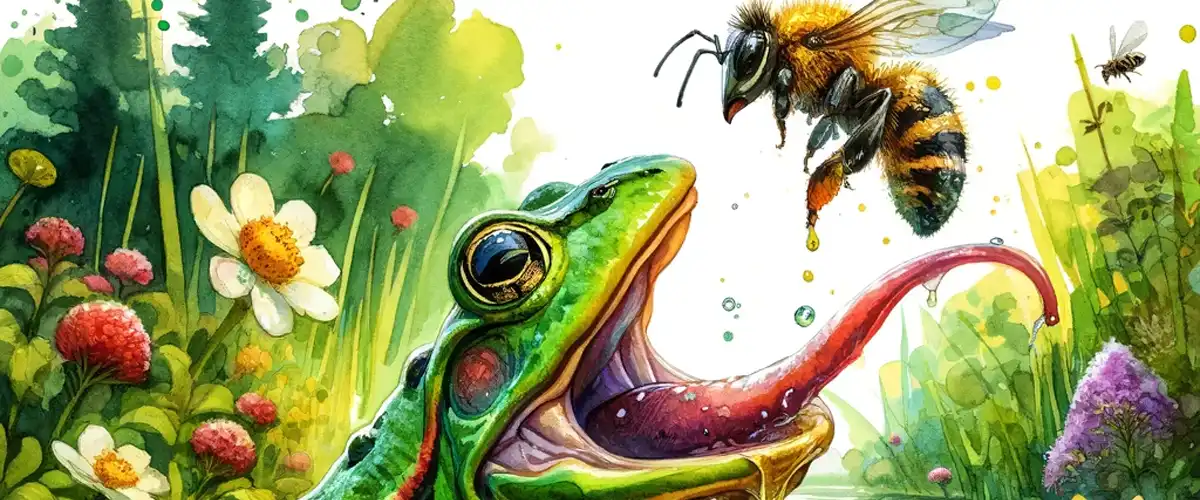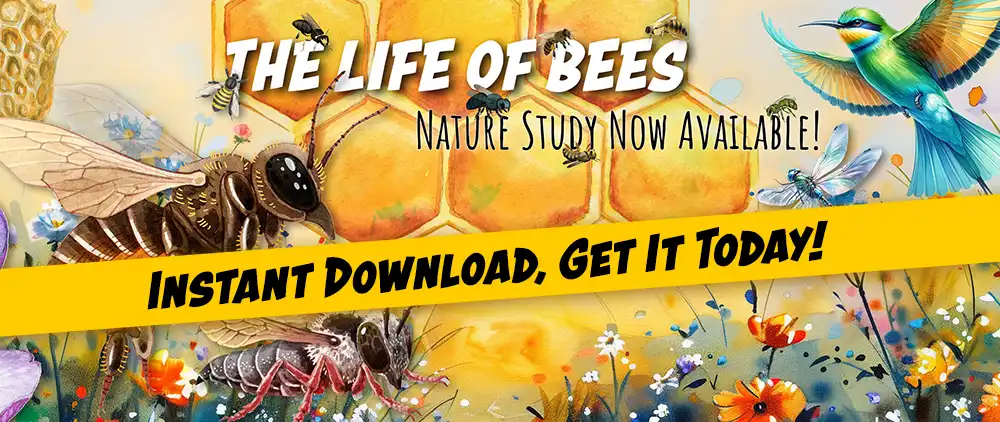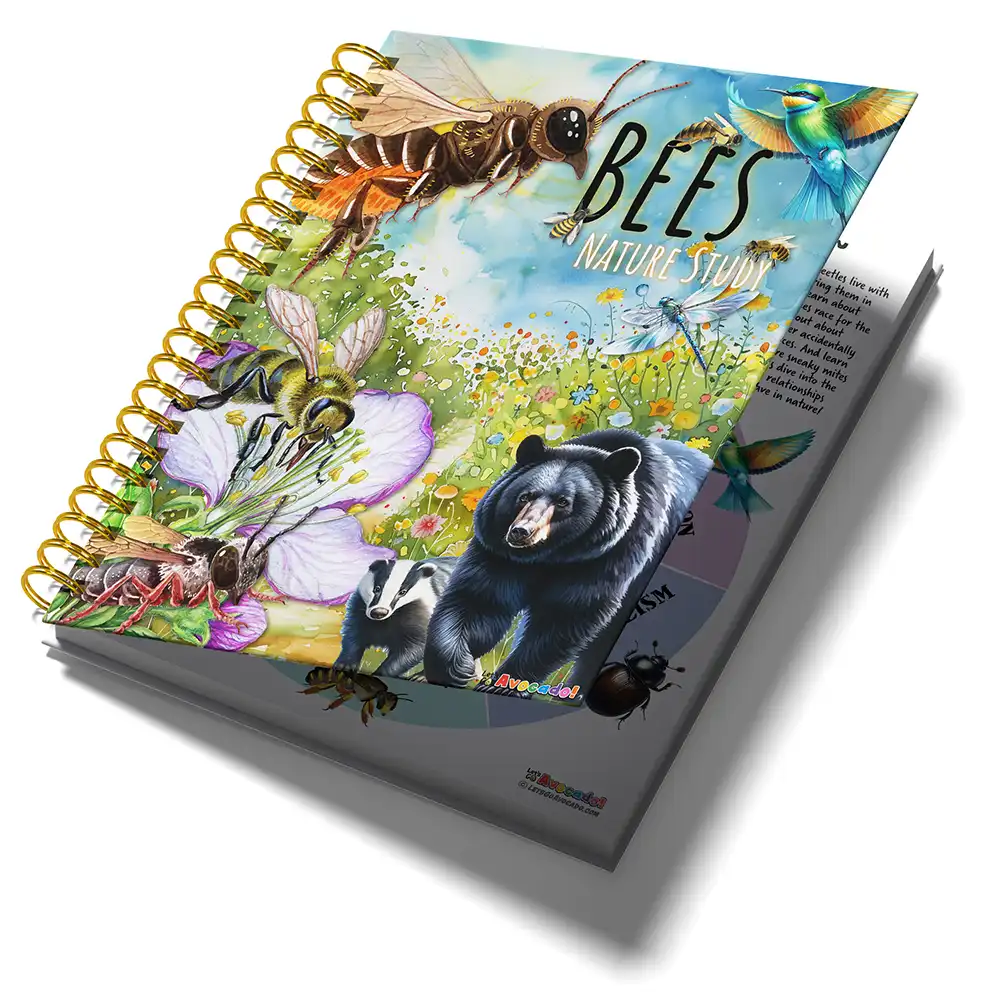This page may contain affiliate links.
Read our disclosure and privacy policy here.
Are you curious about bee interactions in nature, and their impact on other animals? These incredible insects participate in a variety of relationships with plants and animals that go beyond merely buzzing and producing honey. In this article, we dive into six fascinating types of interactions that bees have with other living things, introducing you to some important scientific concepts that describe these relationships.
Table of Contents
6 Fascinating Bee Interactions and Their Impact on Other Animals
Bee Interactions Diagram
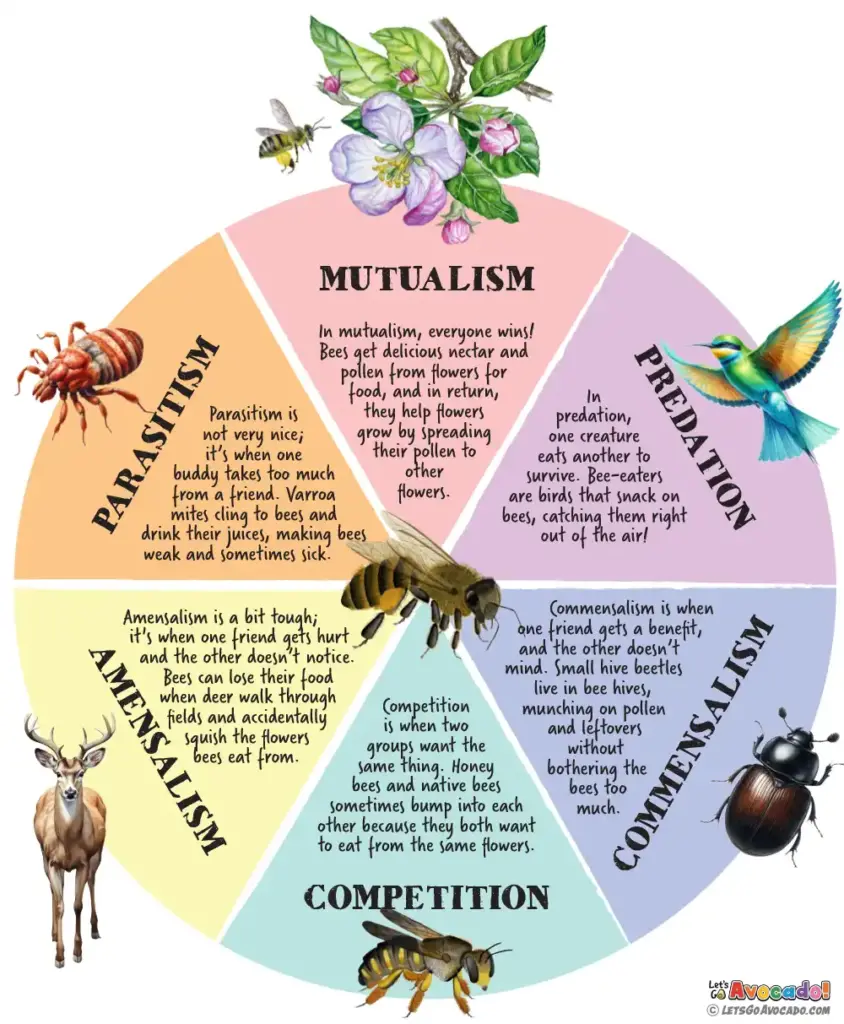
Mutualism: Bees vs. Flowers
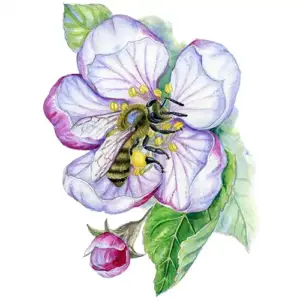
Bees and apple flowers have a mutalistic relationship
Bee Interactions With Flowers: The first type of relationship is called mutualism. This means both sides benefit from each other. Bees and flowers are perfect examples of this. When bees visit flowers to collect nectar, which they use to make honey, they also pick up pollen. As they move from flower to flower, they spread this pollen, which helps plants grow seeds and reproduce. So, the bees get food and the flowers get to spread their pollen—a win-win!
Predation: Bees vs. Bee Eaters
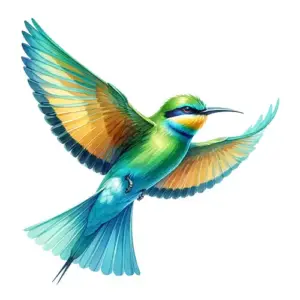
Bee eaters are colorful birds that catch and eat bees as part of their diet.
Bee Interactions With Bee Eaters: Next up is predation, where one animal eats another. Bee eaters are colorful birds that, as you might guess, eat bees! This might sound scary, but it’s a natural part of life in the wild. The bee eaters rely on bees for food, and catching bees helps keep the bee population in balance with the environment.
Commensalism: Bees vs. Small Hive Beetles
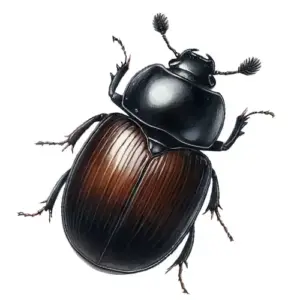
Small hive beetles are pests that live in bee hives and can damage them by eating honey, pollen, and even bee larvae.
Bee Interactions With Small Hive Beetles: Commensalism is when one animal benefits and the other isn’t helped but also isn’t hurt. Small hive beetles live in bee hives, where they eat leftover pollen and nectar. The beetles get a safe place to live and food to eat, but the bees don’t really gain anything. Luckily, they aren’t harmed by having the beetles around either.
However, if there are a lot of beetles, their relationship can turn into a parasitic one. This happens because the beetles can start to damage the hive more seriously. They might eat bee eggs and young bees, or spoil the honey by making it dirty, which can hurt the bees’ ability to survive and thrive. In this situation, the beetles are still getting what they need, but now they are causing harm to the bees, which makes it a parasitic relationship.
Competition: Bees vs. Native Bees
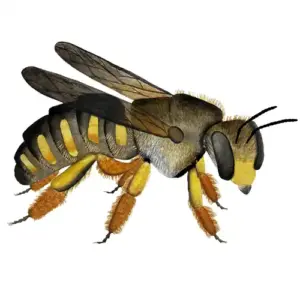
Honey bees and wool carder bees compete for the same flowers to gather nectar and pollen.
Bee Interactions With Native Bees: Sometimes, bees compete with each other. This is called competition. Honeybees and native bees often go to the same flowers for nectar and pollen. When there are too many bees at the same flowers, they must compete to get enough food. This can make it tough for all the bees to get what they need.
Amensalism: Bees vs. Deer and Large Animals
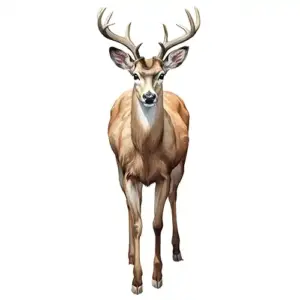
Deer can harm bees by accidentally stepping on and crushing the flowers that bees need to collect pollen and nectar.
Bee Interactions With Deer: Amensalism is a tricky word! It describes a relationship where one creature is harmed and the other isn’t affected much at all. For bees, this happens when deer or other large animals walk through fields and accidentally step on the flowers the bees need for food. The flowers get crushed, which is bad for the bees, but the deer or animals just keep walking along.
Parasitism: Bees vs. Varroa Mites
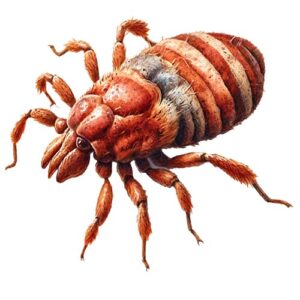
Varroa mites are found all around the world and are a major threat to bee populations almost everywhere they live.
Bee Interactions With Mites: Lastly, there’s parasitism. This is when one animal lives on or in another animal and causes harm. Varroa mites are tiny bugs that attach to bees and suck their blood. This can make bees very sick and can hurt the whole hive. It’s tough for bees to deal with these mites, which makes it important for people who keep bees to help protect them.
Why are bee relationships important?
Understanding the relationships that bees have with other living things is really important for several reasons. First, it helps us see how bees impact many other parts of nature, including plants and animals that depend on them. When bees pollinate flowers, they help plants grow and produce fruit, which many animals, including humans, eat. By studying bees, we also learn how to protect them and keep them healthy, which is crucial because bees are facing threats like diseases and habitat loss. When we know what harms bees, like certain pesticides or losing their natural homes, we can make better choices to help them. This keeps our environment healthy and ensures we have lots of fruits and vegetables to eat. So, by looking after bees, we are actually looking after our planet and ourselves!
Fun Facts About Bee Relationships
Pollination Powerhouses: Bees are responsible for pollinating about one-third of the food crops we eat, including many fruits, vegetables, and nuts. This makes them crucial helpers in our agriculture.
Bee Bread Buffet: Bees create a special food called “bee bread” from pollen, which they collect from flowers. This nutritious mix feeds not just adult bees but also their larvae, helping the hive thrive.
Bee Whisperers: Some flowers have evolved to release scents that specifically attract bees, making these plants more likely to be pollinated. This is a smart way for flowers to ensure they continue to reproduce.
Guardians of Growth: By pollinating plants, bees not only help in the growth of fruit and seeds but also assist in the reproduction of plants, which maintains biodiversityBiodiversity refers to the variety of living things in an ecosystem. The more biodiversity there is in an ecosystem, the healthier and stronger it is. Learn More in nature.
Unintended Roommates: Certain creatures like small hive beetles and varroa mites live inside bee hives. While these guests might cause problems, their presence sparks important research on how to protect bee colonies.
FAQ: 10 Questions Kids Ask The Most About Bees And Their Interactions With Other Living Things
Why do bees visit flowers?
Bees visit flowers to collect nectar and pollen. Nectar is their food and gives them energy, while pollen feeds baby bees. This helps flowers too, because bees spread pollen between flowers, helping them make seeds.What animals eat bees?
Birds like the bee-eater, some species of spiders, and even some small mammals prey on bees. These predators help keep bee populations in balance within ecosystemsAn ecosystem is a community of living organisms, like insects and birds, and non-living components, like water and rocks, that interact with each other in a specific area. Learn More.Do bees have friends?
Yes, bees have relationships that can be friendly, especially with flowers and plants that rely on them for pollination. This mutual benefit helps both the plants and the bees thrive.Can bees and other insects live together?
Bees often share their environment with other insects. Some, like butterflies, may compete with bees for nectar, while others, like small hive beetles, can live inside bee hives without harming the bees much.Why are bees important to the environment?
Bees are crucial for pollinating many plants and crops, which helps produce much of the food we eat. By supporting plant growth and contributing to healthy ecosystems, bees play a key role in maintaining biodiversity.What happens if bees disappear?
If bees were to disappear, we would see a big decline in the variety of plants, including many fruits and vegetables, due to the lack of pollination. This would not only affect humans but also many animals that rely on these plants for food.Do bees harm any other animals?
Bees don’t usually harm other animals, but they can affect them indirectly. For example, large animals might accidentally trample the flowers bees need for survival, which can hurt bee populations.What are varroa mites?
Varroa mites are tiny parasites that attach to bees and suck their blood. This can weaken and even kill bees, posing a big threat to bee colonies worldwide.How do bees communicate with each other?
Bees communicate through dances and chemical signals called pheromones. For example, the waggle dance tells other bees where to find food, and pheromones can alert others to danger or help organize the hive.Do bees ever help other bees from different hives?
Generally, bees are loyal to their own hive and work to support it. However, they may interact with bees from other hives if they are gathering food in the same area or during swarming when they look to establish new colonies.
Bee interactions with other living things are a fascinating topic to explore. It shows us how bees have such a large impact in their ecosystems. From teaming up with flowers to dodging predators, bees play a huge part in the world around us. Understanding these interactions helps us see why we need to protect bees and keep our environment healthy.
References
Here are three educational websites that are great for kids who want to learn more about bees and their relationships with other living things:
-
The Bee Conservancy: This site offers a variety of kid-friendly activities and resources to teach children about bees and their important role in the environment. It includes fun educational tools like comics and activity guides that help inspire and educate young learners about bee conservationThe act of protecting and preserving natural resources and the environment. Conservation efforts are important to protect beavers and their habitats. Learn More. Visit The Bee Conservancy
-
Pollinator Partnership: This website provides a comprehensive set of resources, including pollinator-themed activities, educational kits, and planting guides. It’s great for learning about different pollinators and how to protect them through fun and engaging activities suitable for young students. Visit Pollinator Partnership
-
National Geographic Kids: This site offers a range of resources to help kids learn about bees and other pollinators through fun facts, educational articles, and engaging activities. It’s a great way to explore the exciting world of bees and their vital role in our environment. Visit National Geographic Kids
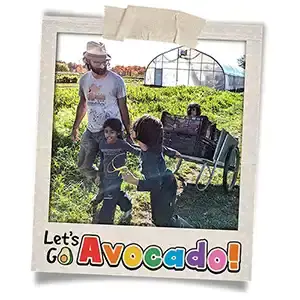
There’s a lot to explore right where we are, in our own neighborhoods and backyards! Join us while we get off the couch and explore the everyday wonders of nature, science, space, engineering, art, and anything else we stumble upon during on our adventures.


